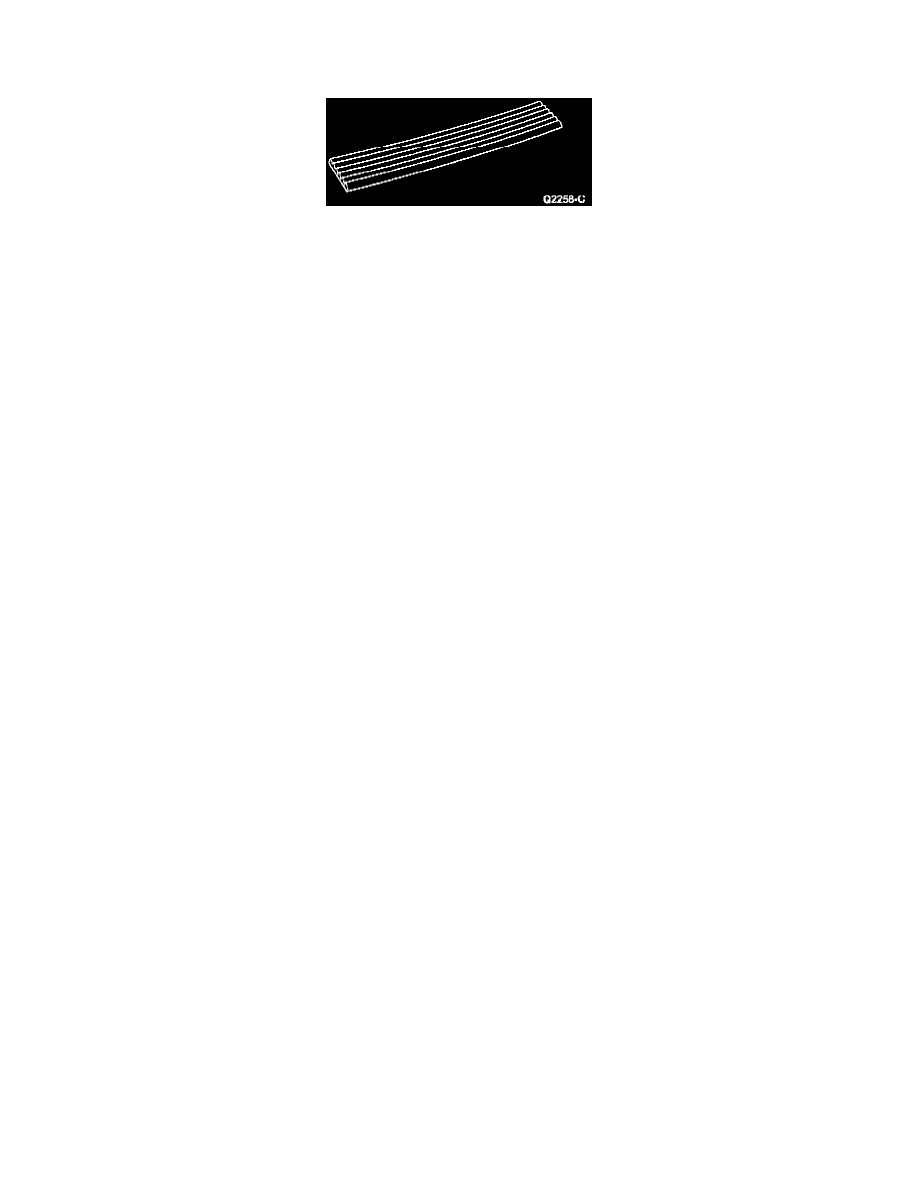Sable V6-3.0L VIN U (1999)

Drive Belt: Description and Operation
Operation
NOTE: When a drive belt is replaced or reinstalled after a service procedure, the drive belt does not fully seat into pulley grooves until engine has
run for several minutes.
NOTE: The drive belt tensioner arm should rotate freely without binding.
Taurus, Sable vehicles are equipped with V-ribbed serpentine drive belts:
-
To ensure maximum life, replacement drive belts should be of the same type as originally installed.
-
The automatic drive belt tensioners will not require any tension adjustment for the life of the drive belt.
-
The 3.4L SHO engine is equipped with a separate water pump drive belt located on the rear of the LH cylinder head.
The drive belt condition should be checked:
-
at 160,000 km (100,000 miles).
-
then every 24,140 km (15,000 miles) thereafter.
V-Ribbed Drive Belt
Drive belt chirp is a regularly occurring chirping noise that occurs due to:
-
Pulley misalignment.
-
excessive pulley runout. It can be a result of a damaged pulley or a replaced pulley that was not properly aligned. To correct drive belt chirp:
-
determine the area where the noise occurs.
-
Check each of the pulleys in that area with a straightedge to the crankshaft pulley.
-
look for the accessory pulley to be out of position in the fore/aft direction or at an angle to the straightedge. Drive belt squeal is an intermittent
noise that occurs when the drive belt slips on a pulley during certain conditions such as:
-
engine start-up.
-
rapid engine acceleration.
-
A/C clutch engagement.
Drive belt squeal can occur under the following conditions:
-
if A/C compressor is damaged.
-
if any of the accessories are damaged, have a worn or damaged bearing or internal torsional resistance above normal for any reason. All of the
accessories should be rotatable by hand in the unloaded condition. If any are not, the accessory should be inspected.
-
if fluids get on the drive belt. This would include power steering fluid, engine coolant, engine oil and air conditioning system lubricant.
-
If fluids get on the drive belt during service, clean the drive belt with soap and water. Thoroughly rinse with clean water. The drive belt does
not have to be replaced if no apparent damage has occurred.
-
if the drive belt is too long. This will allow the drive belt tensioner arm to go all the way to tensioner arm travel stop under certain load conditions.
This would remove tension from drive belt. If the drive belt tensioner is resting on the stop, replace the drive belt.
-
if the drive belt tensioner is worn or damaged.
